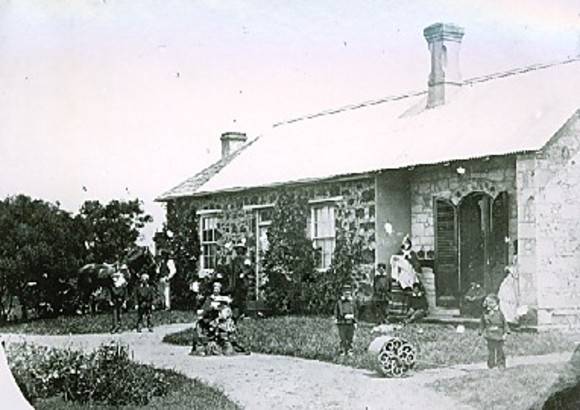| Back to search results » | Back to search page » |
|
Former 'Wirngill'
Other NameCombe Location24 Regent Street, PORT FAIRY VIC 3284 - Property No B3230
File NumberB3230LevelLocal |
|
Statement of Significance
The first stage of this single storey bluestone and brick residence consisted of two separate cottages which were built about 1850 for R H Woodward. The second stage was built about 1855 and this was a substantial addition which linked the two cottages. Further major additions were made about 1861 and again about 1878. Port Fairy Historic Area Statement of Significance: Port Fairy is a natural harbour where the Moyne River enters the sea, the fourth of Victoria's coastal settlements and now the one with the greatest concentration of pre-Separation buildings.
Externally the house has an unusual scallop design eaves valance, an interesting recessed entrance door and internally the eliptical arched openings are noteworthy .R. H. Woodward who was a surveyor played an important role in the early life of Port Fairy (then known as Belfast). He was mayor, a J.P., chairman of the Road Board and was one of the most distinguished early pastoralists with extensive properties in Victoria, New Zealand and New South Wales.
2010 Note: House in good condition.
Classified: 04/12/1980
These include numbers of simple double-fronted cottages in the local limestone, imported timer, and some basalt from the nearby flows, and the earliest of them may contain material from the whaling and pastoral period which preceded the sale of the site by the Crown. The bulk of development post-dates both the finalisation of Atkinson's acquisition by Special Survey in 1843 of eight square miles (20 sq.km. of land, and the establishment shortly afterwards of a rival government town on the foreshore.
The characteristic qualities of the town derive from the coastal atmosphere and especially the timber wharves and jetties on the Moyne River (despite some intrusion of concrete), and the simple cottages and early hotels and commercial building, principally in the local limestone, all of which invite comparison with the South Australian port of Robe.
A special flavour is given to Port Fairy by the Irish influence of its early inhabitants upon the architecture, by the importation of Tasmanian materials and complete prefabricated buildings, by the widespread planting at later dates of Norfolk Island Pines, by the fine tufa stone carvings of Walter McGill which adorn the church buildings, and by the major buildings, of the distinguished local architect Nathaniel Billing. All of these features are to be seen not only inside but in a more dispersed manner outside the designated area: within the area by contrast it has been necessary to exclude a section of mediore modern development, the future of which (and especially the scale of building) must be closely monitored to prevent it further impinging on the special character of the town.
Classified: 02/03/1981
Group
Residential buildings (private)
Category
House





